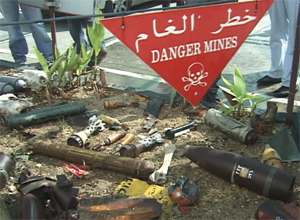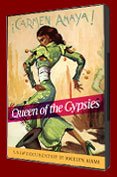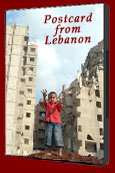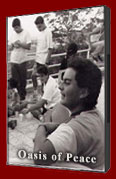SPECIAL PROJECTS
CLUSTER BOMBS: HELP US BAN THEM!
ON MAY 30, 2008 in Dublin, Ireland over 111 nations adopted an international treaty banning cluster bombs. The USA was not among them. This is the most significant humanitarian disarmament treaty of the decade. In December of 2008 in Oslo Norway, 94 countries signed the treaty.
Cluster bombs are weapons that are designed to deploy and release submunitions over a widespread area. They are non-discerning weapons with an indiscriminate kill radius. Also, they fail to explode 5% to 40% of the time and become landmines. They pose unacceptable harm to civilians. At least 30% of the victims are children.
These weapons were first used in World War II and we (the US) used them in Vietnam, Laos and Cambodia. More then 30 years later, today, these bombs are still exploding and killing people because of their “dud” rate. The United States is the greatest producer, stockpiler and manufacturer of cluster bombs.
Unfortunately, in 2006 when Israel dropped 4 million bomblets on Lebanon, more than 300,000 submunitions became landmines and one million were projected to be cleared . This was the most extensive use of cluster bombs since the Gulf War and it catalyzed the initiative towards drafting an international treaty banning cluster bombs.

Consider this, over 30 years ago we (the US) dropped over 250 million bomblets on Laos. They continue to explode today. Help us ban this terrible weapon.
The US administration has not yet taken a position on whether it will bring the United States into the cluster bomb treaty negotiated and opened for signing in 2008. While he was in the Senate, Obama voted for an amendment to restrict cluster bomb use and export, and in December 2008 his transition team promised to carefully review the new treaty. With so many other issues pressing for his attention, President Obama needs to know that he has support from the public and from the Senate to place further restrictions on these weapons and put the U.S. on track to join the global ban treaty. Help change U.S. policy by urging your senators and representatives today.
Four things you can do:
- Write your Senator, you can find him/her at
www.senate.gov/general/contact_information/senators_cfm.cfm - Go to the Cluster Munition Coalition Website and sign the People’s Treaty www.stopclustermunitions.org
- Educate others
- For updated information contact The United States Campaign to Ban Landmines
www.uscbl.org
Thank you for your Help. Jocelyn Ajami
. . . . . . . . . . . . . . . . . . . . . . . . . . . . . . . . . . . . . . . . . . . . . . . . .
February 2010
Response to Obama War and Peace – Excellence not Dominance
CLICK HERE for a video by Jocelyn Ajami
a talk called “Excellence not Dominance” on youtube.com
. . . . . . . . . . . . . . . . . . . . . . . . . . . . . . . . . . . . . . . . . . . . . . . . .
THE DEVOURING (PORRAIMOS)
(A project in development).
The Romanies (Gypsies) were considered by Nazi ideology to be “lives unworthy of life” and that they should be sterilized and eliminated as a people. 21,000 Roma (Gypsies) perished in Auschwitz, from a total of 500,000 who were exterminated in the Holocaust. And yet, even the Gypsies don’t often tell this story.
This tragedy should not be forgotten especially since it reflects the continued persecution of the Roma in Eastern Europe. This tragedy poses many difficult questions regarding our view of history, justice and culture. As a diaspora of tribes (often ignorant of each other), with a common root in India, the Roma challenge our conventional notions of history, citizenship, and ethnicity. This challenge is often met with persecution. In the case of the Holocaust, the issues were clear: like the Jews the Gypsies were exterminated on the grounds of race. Unlike the Jews, however, the Gypsies, by their own choice, have no tradition of commemoration regarding this tragic event, although there has been a great deal of political activism in the last few years.
The Devouring will ask difficult questions regarding the responsibilities of a civil society while telling the story of this little known tragedy.
. . . . . . . . . . . . . . . . . . . . . . . . . . . . . . . . . . . . . . . . . . . . . . . . .





